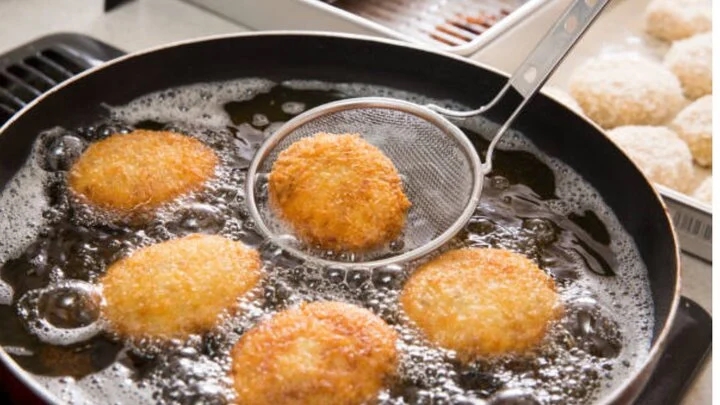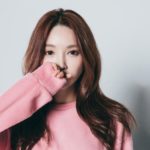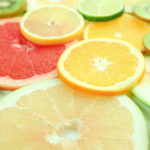For many people, fried foods are always very appealing. However, buying pre-fried items is still considered a solution by some families to avoid the hassle of splattering oil around the kitchen.
If you know the secrets to frying food without splattering oil, you will no longer have any worries. Nevertheless, preparing it yourself is still safer because you can control the quality of the cooking oil as well as the temperature, avoiding reusing the frying oil or letting the temperature get too high, causing burning and the production of harmful substances.
Tips for frying food without splattering oil
The situation of oil splattering during frying not only dirties the kitchen and the floor but can also cause burns. That is why many people feel hesitant to make fried dishes. Please keep in mind the following tips for frying food without splattering oil and try them out in the future.
Use a high-sided non-stick pan
A high-sided non-stick pan is the perfect choice for fried dishes because it not only helps you to easily flip the food, limiting the food from burning during the frying process, but it also effectively prevents oil from splattering. It is best to choose a non-stick pan with a side height of at least 5cm.
Drain the food well before frying
Water and cooking oil do not mix. Therefore, if you drop food with water still on it into hot oil, the oil will splatter. One of the things you must remember to fry food without splattering oil is to completely drain the food of water before frying. You can also use paper towels to remove all the water before frying.

The secrets to frying food without splattering oil will help you overcome the hesitancy of making fried dishes. (Illustration photo: Istock)
Use table salt
You pour oil into the pan, wait for the oil to heat up, then sprinkle a bit of table salt, and finally put the food in to fry as usual. This is a simple but effective tip for frying food without splattering oil. In addition, the salt also helps to remove toxins from the cooking oil.
Press the food with ginger
Ginger – a readily available spice in the kitchen – also helps to reduce the situation of splattering oil effectively. Clean the ginger and dry it, then cut a few thin slices. Heat the pan, when it is medium hot, put the ginger slices in and use a chopstick to move the ginger slices all over the pan. After manipulating like that continuously for a few minutes, remove the ginger slices and fry as normal.
Use lemon
Another secret to frying food without splattering oil is to cut a lemon and rub it on the bottom of the pan before pouring in the cooking oil.
Use flour
Fried chicken, fried fish will be crisper, evenly browned, and less oil spattering if you marinate them with a bit of flour, because the flour helps to absorb water and dry the surface of the food.
After marinating the food with flour, you should shake it well and fry it right away. You should leave or remove excess flour to avoid making the oil sticky when frying.
Use a splatter screen instead of a lid
Instead of using a temporary pot lid to shield the oil, which makes the food not crispy, you can buy a splatter screen to cover the pan when frying the food, both limiting oil splattering and maintaining crispiness for the food.
Do not fill the pan with too much oil or fry too much food at once
Do not pour oil more than halfway into the pan as it will cause the oil to spill out when you put the food in. You should also not be eager to fill the pan with food when frying because the cooking oil will foam up, splatter, or spill out.
Maintain the appropriate temperature
You should let the oil heat up before putting the food in to fry, then reduce the heat and keep it at a stable temperature for the food to cook evenly and turn golden crispy. Do not let the heat be too high, causing the surface of the food to quickly burn but the inside may not be cooked, and do not set the heat too low, or else the food will not be crispy and will absorb more oil.
The best frying temperature is about 350 degrees F to 375 degrees F (equivalent to 177 – 191 degrees C).
According to VTC NEWS






































